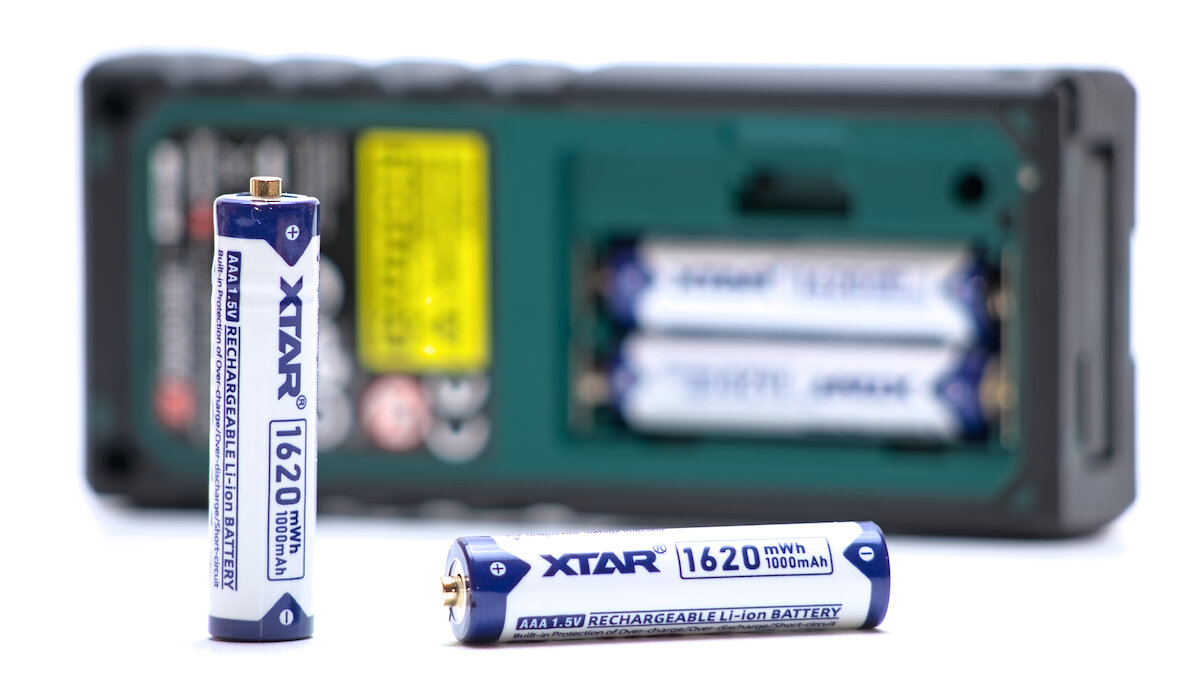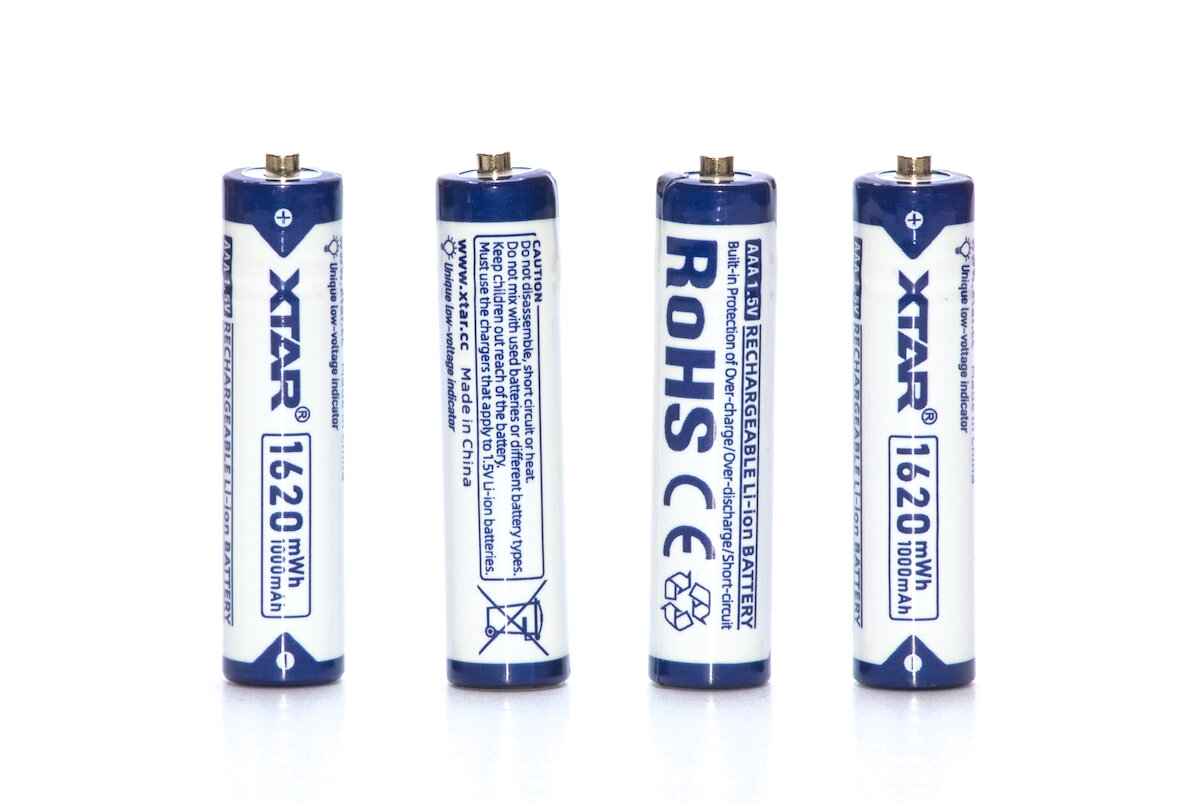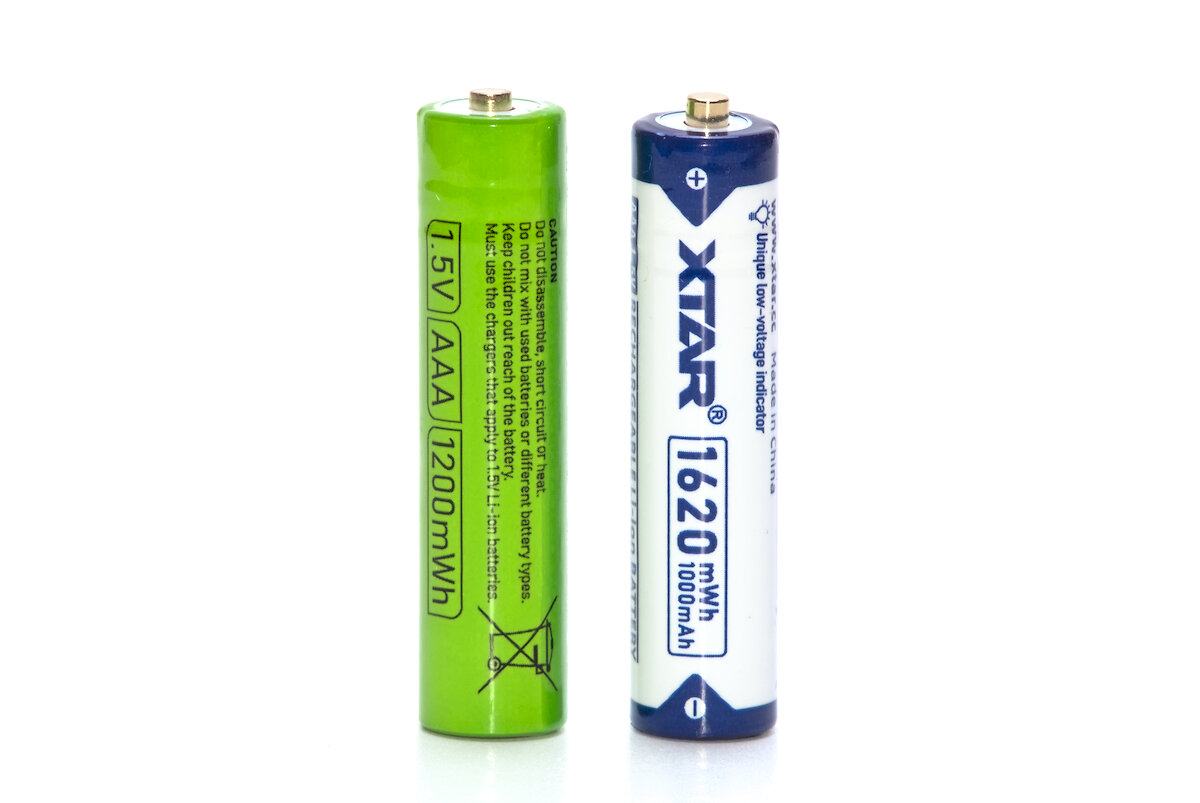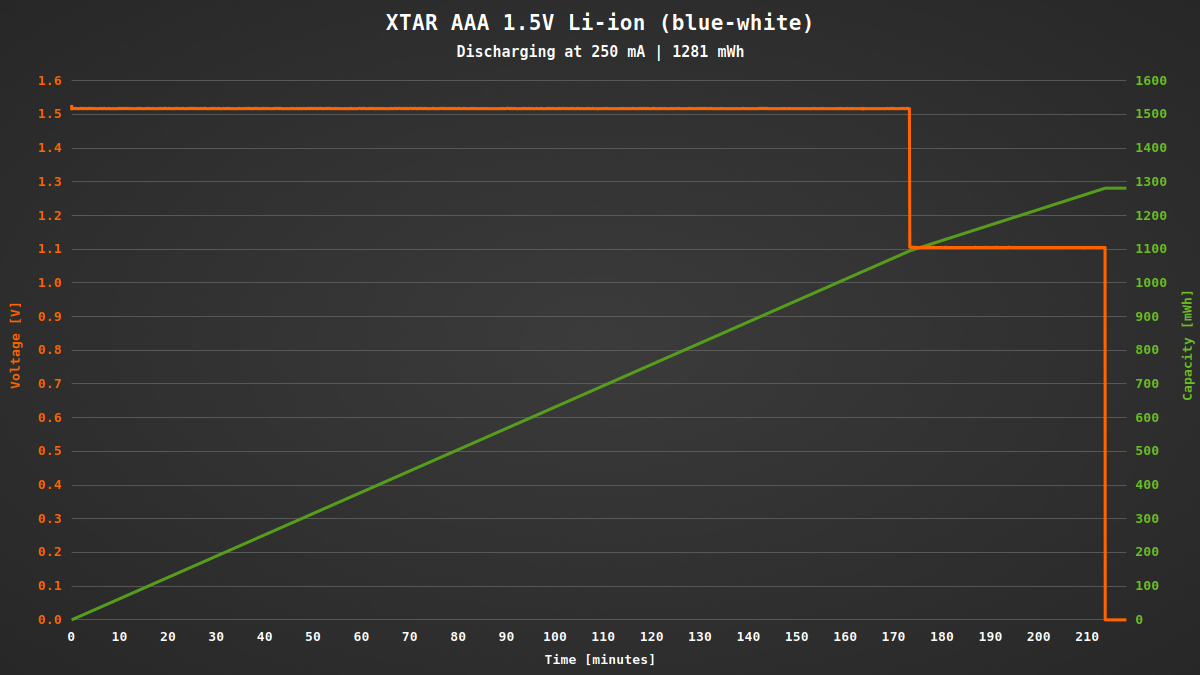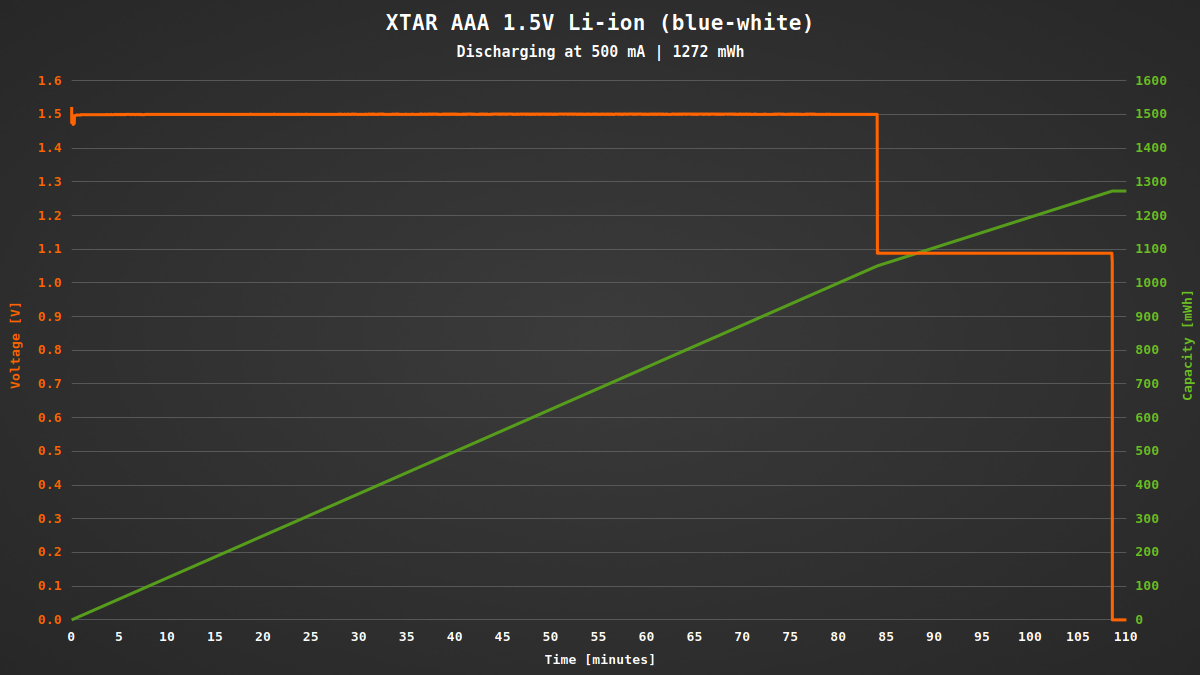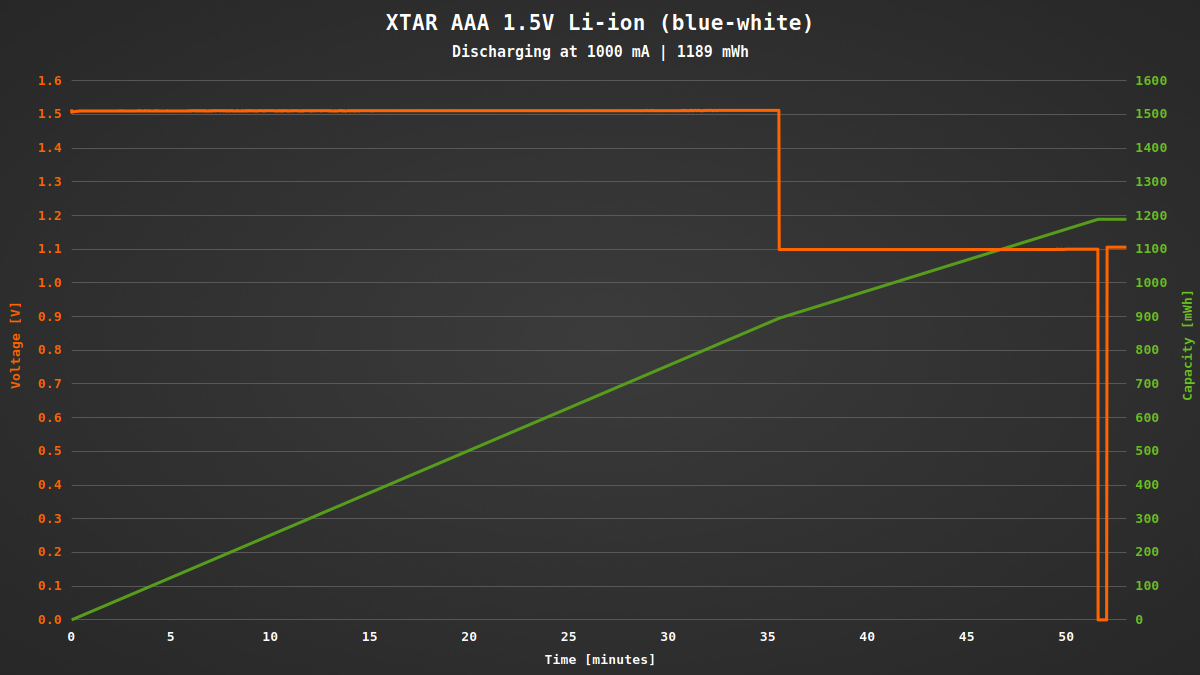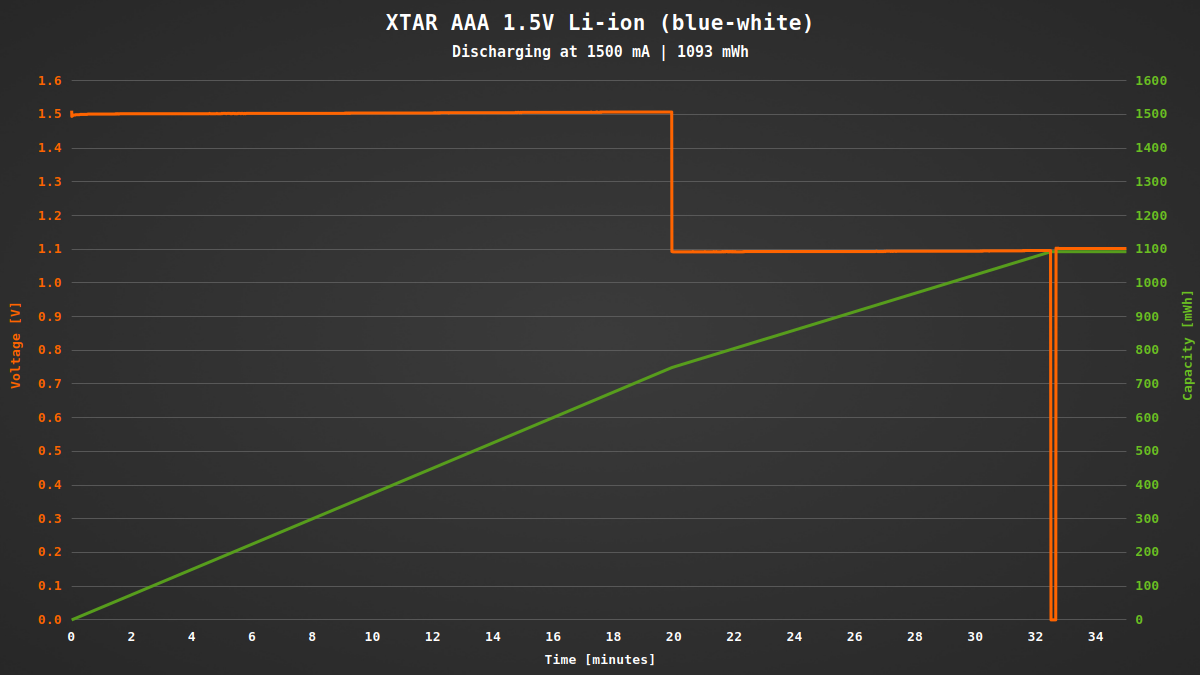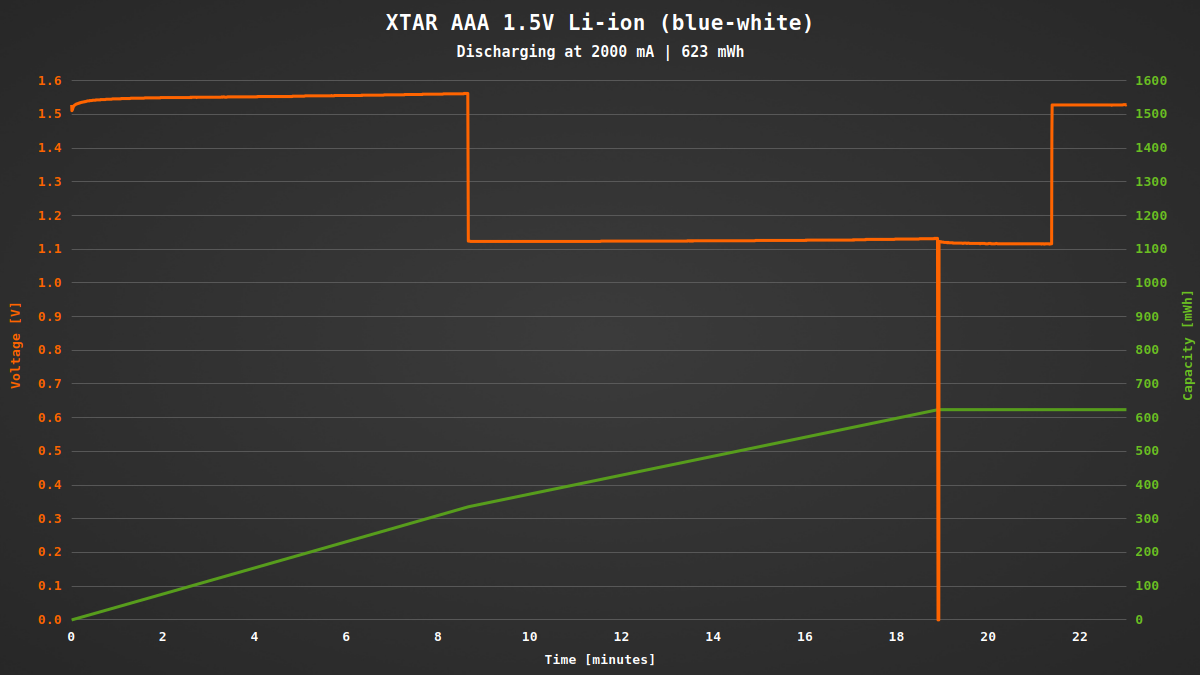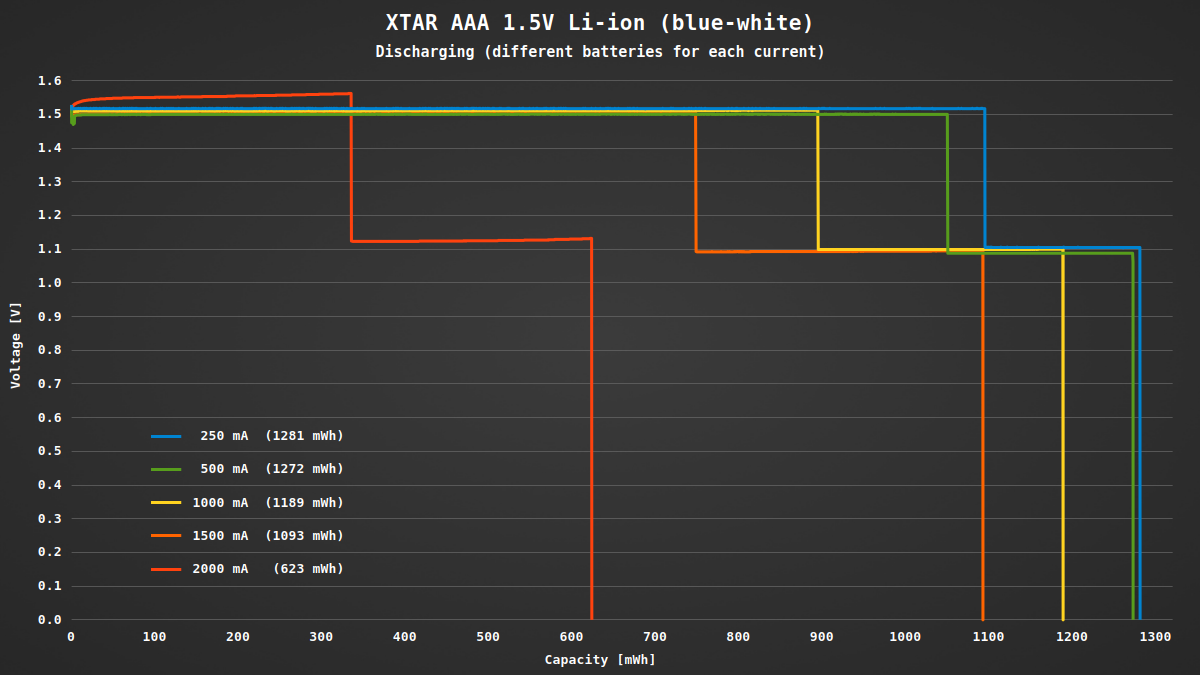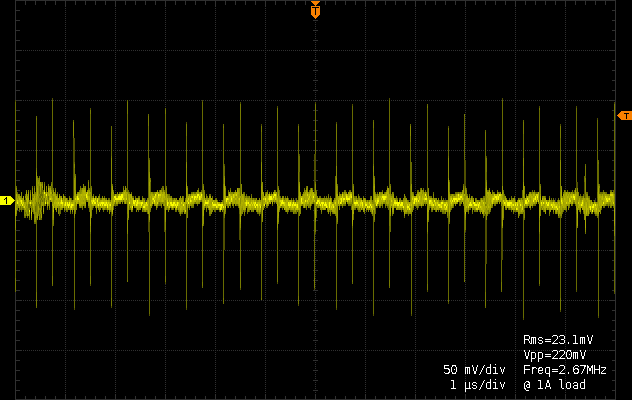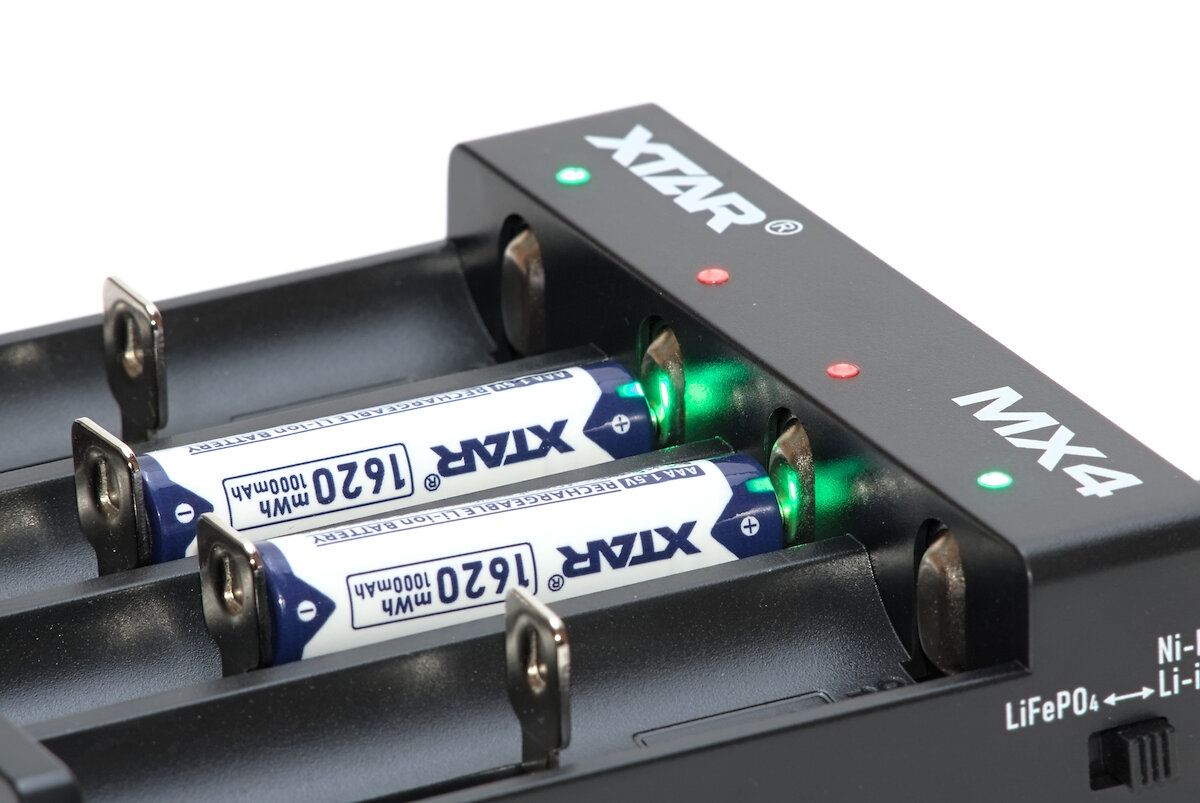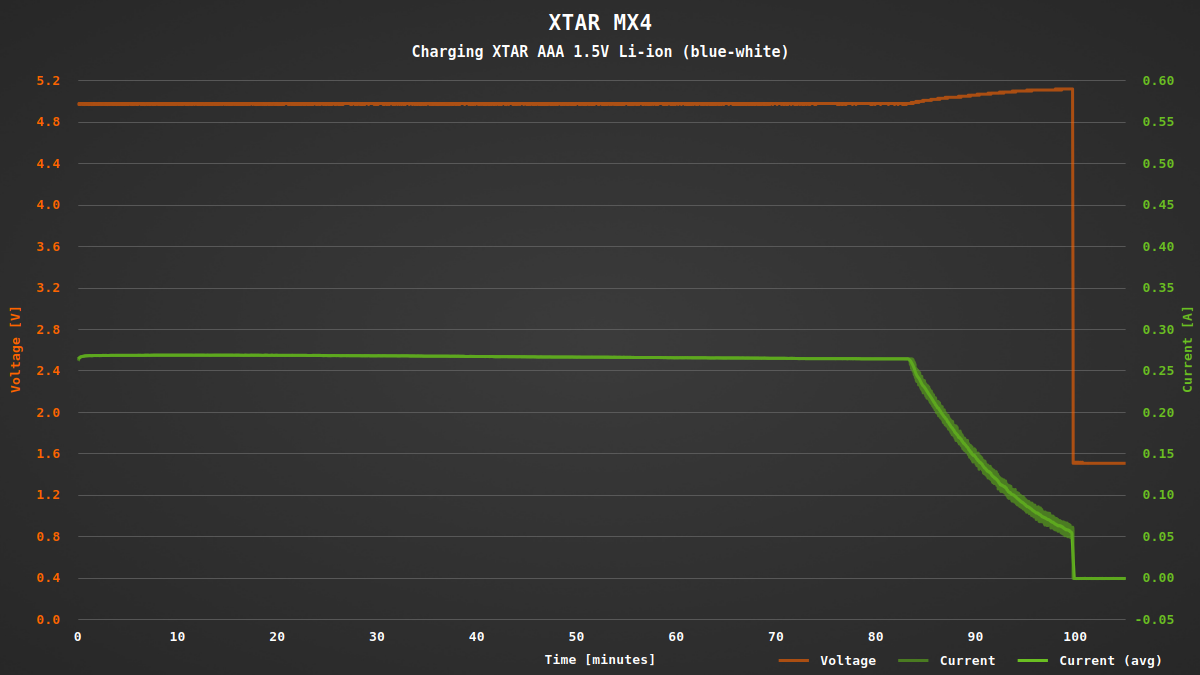XTAR upgraded their (previously green) 1.5 V regulated Li-ion based AAA batteries (we need a better term for them). Now they are blue-white and come with 1620 mWh instead of 1200 mWh.
You can find the German version of this review on my website: SammysHP Blog › XTAR 1,5 V 1620 mWh AAA Akkus und MX4
The batteries were provided by the manufacturer for this review. Thank you very much!
Overview
The official name for this product is “XTAR AAA Lithium 1620mWh Battery”. The contest for a better name is now officially open!
More or less the same size as regular AAA batteries: 44.4 mm in length and 10.3 mm in diameter. With a weight of 8.9 g they are slightly lighter than common NiMH batteries.
Dimensions and weight are identical with the previous version in green. The positive terminal is slightly longer, but the total length is the same.
Discharging
A special feature of many XTAR batteries is their low voltage indicator: When the battery is “almost” depleted, the voltage jumps from 1.5 V to 1.1 V to allow devices to show a low battery warning. This only works if the device still operates at that voltage, though! This kind of batteries is mostly used with devices that require a higher voltage than 1.2 V NiMH batteries.
The batteries have a rating of 1620 mWh – a huge improvement compared to the previous version with only 1200 mWh. Unfortunately my measurements were ranging from 1000 to 1300 mWh depending on the load. Even considering the conversion loss, this appears to be less than advertised. It is more than the previous version, but the additional energy is only available at the reduced voltage of 1.1 V.
They are officially rated for 2 A continuous discharge. At that current the capacity is already significantly reduced (623 mWh). I was able to get up to 3 A for a short time. At higher current the output voltage dropped.
A huge problem with this kind of batteries is the electrical noise from the integrated switching regulator. There’s not much space for filtering and the regulator is run at high frequency. This causes issues with some devices like radio receivers or radio-controlled clocks.
Charging
Charging requires a special “charger” – which is not much more than a battery holder that applies 5 V to the terminals. The actual charging controller is integrated in the batteries. During charging an indicator LED in the batteries is blinking green.
Nice charging with around 250 mA. Unfortunately there’s no way to check the voltage of the internal cell without unwrapping it.
Conclusion
Overall a nice battery for situations where 1.2 V from a NiMH battery is not enough. Most of the time the XTAR AAA batteries will output constant 1.5 V. They switch to 1.1 V to indicate a low state of charge.
Unfortunately they still have a lot of electronic noise that causes malfunction of some sensitive devices. Also their measured capacity is much lower than their rating.
